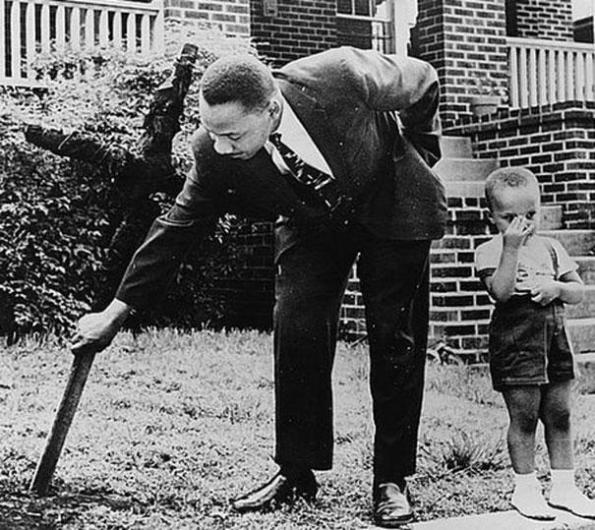Today is a day set aside by the Federal government to honor Dr. King. King is most famous for his “I Have a Dream Speech” 1963 , for leading the civil rights movement, for being a pastor, and for being assassinated 1968. In many ways King was the last Leader of American black people – Malcolm X had already been assassinated three years earlier 1965. I believe for this reason many people who are not black in America think that the civil rights cause won and things have improved vastly from the era of Jim Crow segregation that started during Redemption 1870′s and lasting until the mid 1960’s. If you are doing the math that is nearly a hundred years. One aspect of his work that Dr. King was less noted for is his work on the poor people’s campaign. I believe that while King was definitely a race man, his color defined his history and led to his leadership, he was one of the first black intellectuals to seriously consider the impact of capitalism and economic structures on poor people of all skin types. One remarkable line in the “I Have A Dream Speech” remarks on his longing for a day when people are not judged by the color of their skin. His work towards helping and uniting poor people together to help each other no matter what their color.
From wiki: The Poor People’s Campaign was a 1968 effort to gain economic justice for poor people in the United States. It was organized by Martin Luther King, Jr. and the Southern Christian Leadership Conference, and carried out in the wake of King’s assassination. The Campaign demanded economic and human rights for poor Americans of diverse background. After presenting an organized set of demands to Congress and executive agencies, participants set up a 3000-person tent city on the Washington Mall, where they stayed for six weeks. (http://en.wikipedia.org/wiki/Poor_People%27s_Campaign)
That King would turn towards the problem of class is not surprising given the global climate during his lifetime. Black intellectual leaders had brought class into the focus in different ways. Perhaps starting with Edward Blyden [1832-1912] who posited a rejection of materialism and a return to Africa and “noble savagery” for spiritual health, black intellectuals have been keenly aware of the economic burdens that blacks face. Fanon paved the way in many respects with Wretched of the Earth 1963 to start thinking seriously about the need to examine the divisions of race as masking the struggle of poor people of all races.
What would happen if people stopped hating, suspecting, judging, arresting, harassing, killing, beating each other because of the differences in the pigmentation of one’s skin, the shape of one’s nose, eyes or mouth, and the texture of one’s hair?
Officially segregation ended as laws were struck down across the south which allowed black people to go to white universities or live in white neighborhoods, or swim in public pools, or have to ride in a separate rail car or the back of the bus, or even have sex with a person of a different race, or marry a person of a different race.
If you travel the suburban and rural landscape of the United States, you see segregation still exists, with black sections of cities, towns, neighborhoods, churches, shops. If you read the news and remember Trevon Martin we must see that the segregation of the United States is not upheld by Federal or State laws. It is upheld through force and violence without any legal justification.
If you google statistics for poor people in the United States, you find that 4 out of 5 “U.S. adults struggle with joblessness, near-poverty or reliance on welfare for at least parts of their lives, a sign of deteriorating economic security and an elusive American dream.” (http://www.huffingtonpost.com/2013/07/28/poverty-unemployment-rates_n_3666594.html) That means about 80% of the population are very poor. Why are all the poor people of the country uniting? We must all learn to look past the color of skin, as well as the perceptions of poverty, or the possession of the right genitalia, or who others choose to have sex. Otherwise we remain an impoverished damaged citizenry. I believe this is something Dr. King was moving towards – we will never know because he was gunned down in Memphis on a hotel balcony while he was visiting to support a Sanitation Workers strike.
